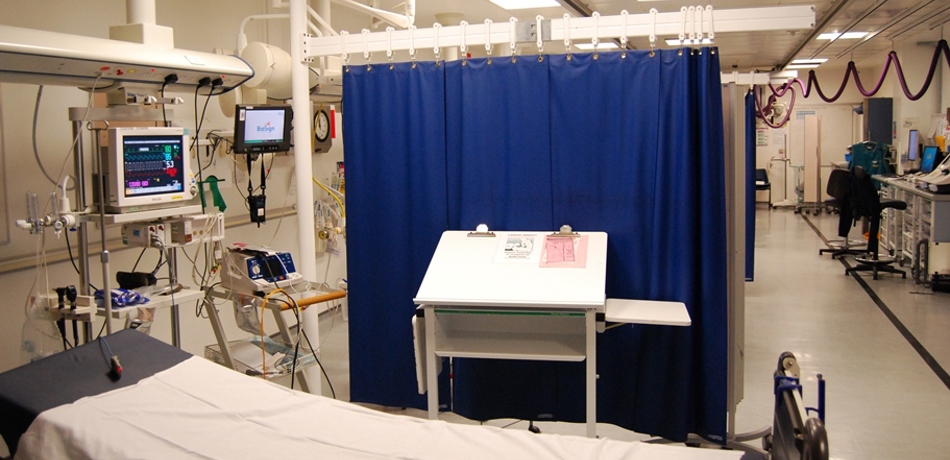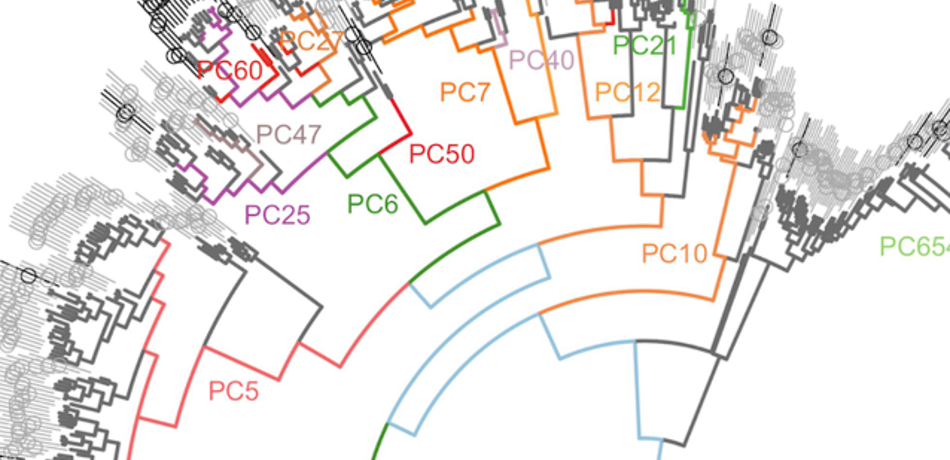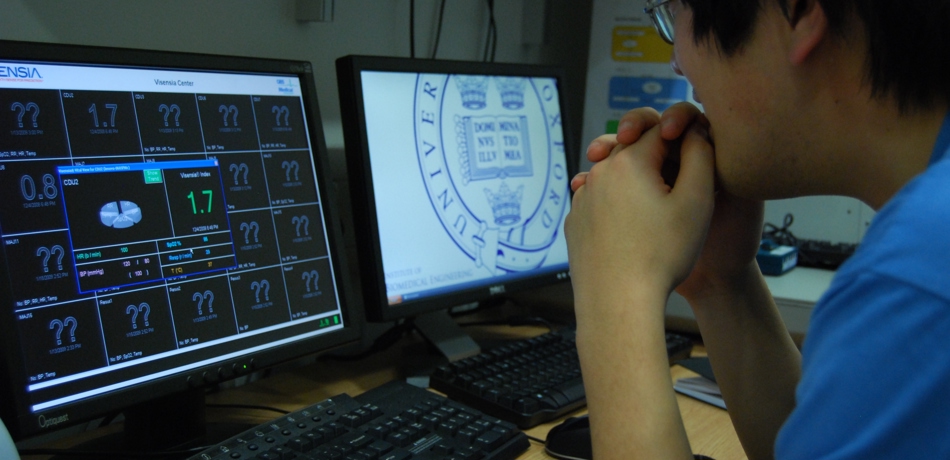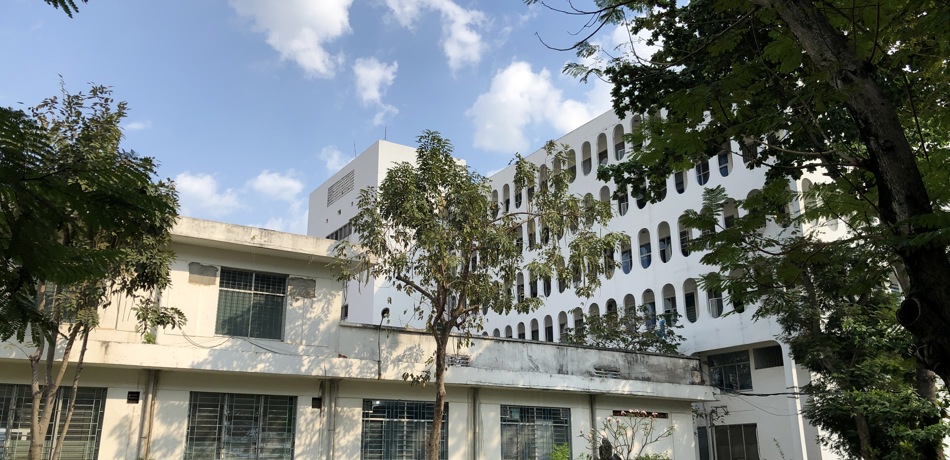Health
Health
Our academics specialise in Computational Neuroscience, Biomedical Image Analysis and Clinical Machine Learning.
Computational Neuroscience
Tim Behrens' team are interested in cross-species investigations that try to investigate neural codes and mechanisms that underlie higher cognition. They are currently trying to understand how the brain stores information about relationships between things in the world. They find it useful to use mathematical and computational models to try to understand what coding principles are possible or likely, and they try to invent novel imaging approaches to measure them in humans.
It is difficult to infer microscopic coding principles from coarse macroscopic data, so we often find ourselves retreating to nonhuman models to validate our conclusions. But it is important to be able to investigate neural coding principles in humans where behvaviour is complex and subjects can perform naturally. It is also exciting to devise such approaches as it potentially allows clinical investigations in humans to specify questions at the level of mechanisms.
We investigate anatomical organisation and cortical processing using computational models and techniques.
Figure illustrates findings from the computational anatomy and decision making and learning groups
We have two main research interests.The computational anatomy group studies the organisation of anatomical brain connections and how they relate to regional brain function. We principally use non-invasive diffusion MRI, often in combination with functional techniques or traditional tracing techniques. We also have a strong methodological focus.
The learning and decision making group mostly investigates the role of frontal cortical mechanisms in controlling behaviour. We use computational descriptions at the behavioural and network levels to form predictions, and test these in neurophysiological, neurochemical, and lesion data.
Biomedical Image Analysis
Alison Noble's group has been understanding the interplay of ultrasound device design (physics), clinical acquisition, and downstream image analysis and computer vision. Much of our recent work has concerned machine learning in ultrasound. We are interested in answering questions such as why is ultrasound scanning and interpretation hard to learn? How can we get computers to mimic what a skilled sonographer can do? What is the role of multi-modal analysis (such as eye-tracking and ultrasound video) in ultrasound imaging? And, can ultrasound be simplified (assisted by AI-assistive technologies) so that minimally trained clinical professionals can use it in non-traditional healthcare settings. Our research is motivated by unmet important clinical needs in developed world and developing world settings, and involves inter-disciplinary translational research collaborations with clinical groups from the UK and overseas.
Recent projects:


Clinical Machine Learning
David Clifton leads the Computational Health Informatics (CHI) Lab. His research focuses on the development of real in-hospital and in-home systems for AI-driven interventions that are used in practice. Translation into low- and middle-income countries (LMICs) is a parallel research theme. The lab has a focus on non-imaging AI methods: time-series analysis, -omics data, and sensor informatics. Projects include:
Acute and Critical care

The Intensive Care Unit (ICU) represents the highest level of acuity within the hospital system. After discharge from the ICU, patients are sent to recover on "step-down wards" or "high-dependency units". While on these acute wards, there is a substantial risk of avoidable deterioration in the patient's condition. Adverse outcomes of this kind are approximately similar in number to the annual mortality due to road-traffic accidents, and represent one of the largest sources of avoidable death in modern healthcare systems.
Our on-going projects in acute care, in collaboration with world-leading intensive care clinicians at Oxford University Hospitals, aim to produce predictive AI-based systems using the huge quantities of data now routinely collected for each patient. Other outcomes from this theme of research include predictive systems to better improve the operation of the hospital, including predictively allocating beds and tests for patients.
Infectious diseases

The UK Chief Medical Officer noted that "infectious disease is as great a threat to national security as climate change" (with more than one new threatening disease identified each year), and that "the difficulty and challenge in identifying and tracking future threats is not the acquisition of trusted physiological and genomic data, but in using these huge databases with new computer science methods for analysis."
We use machine learning to greatly improve our ability to identify and fight outbreaks of infectious disease - including the COVID-19 pandemic of 2020 - using AI-based systems. This theme of research collaborates closely with Public Health England (the UK's Centre for Disease Control or CDC), experts in microbiology from Oxford University Hospitals, and a global network of CDCs from some of the world's largest countries.
Wearables

The overwhelming majority of ambulatory patients in modern healthcare systems are monitored only manually, by members of the clinical staff. There is an urgent need for mobile ("m-health") systems, comprising unobstrusive patient-worn sensors and lightweight processing (such as via smartphone) that are sufficiently robust for use in clinical practice.
CHI Lab is actively researching (i) the tracking of vital signs from sensors in a robust manner; (ii) performing intelligent processing of the resulting data to stratify patients according to risk; and (iii) working on forecasting methods for predicting serious physiological events. These collaborative projects include applications in Oxford University Hospitals and with university spin-outs.
Complex diseases

Major CHI Lab projects focus on the development of AI-based systems to exploit rich clinical datasets, with the goal of improving the understand and treatment of complex diseases. The Oxford University Hospitals and wider collaborations provide very great opportunities to develop new AI methods for diseases that often include both genomic and clinical data.
We have large on-going EPSRC- and Wellcome-funded activity in cardiovascular disease and ECG analysis; chronic obstructive pulmonary disease (COPD, or lung disease); epidemiology via the UK Biobank and China Kadoorie Biobank; and immune disease. All of these projects are characterised by the needs of complex methods to link the very many different types of data that are typically available for each disease.
Low and Middle-Income Settings

This theme includes a number of initiatives that seek to improve access to healthcare in low- and middle-income countries (LMICs). Using AI-based algorithms within smartphones and wearables, we are able to use inexpensive sensors that are appropriate for use at scale in LMICs. The delivery of healthcare in such settings is often performed by healthcare workers without high levels of clinical training, and so there is therefore a need for the decision-support capabilities of such algorithms.
This work builds on the Wellcome Trust's first "Flagship Innovation Centre", which joins CHI Lab in Oxford to the Oxford University Clinical Research Unit in Vietnam; the goal of this major programme is to develop innovations for improving access to healthcare in south-east Asia and beyond. We also work closely with experts in overseas development at the School of Geography & the Environment at Oxford to deliver technology-based systems for improving water security in LMICs.




